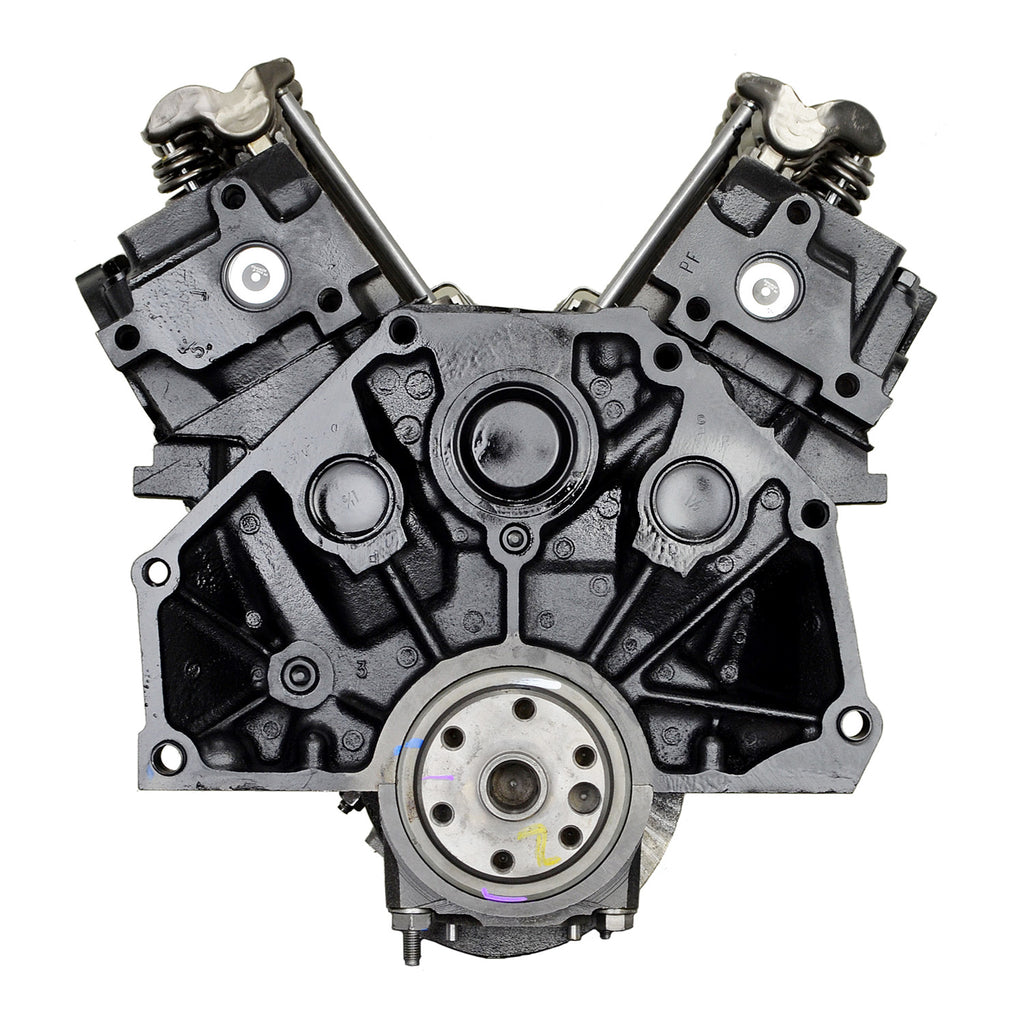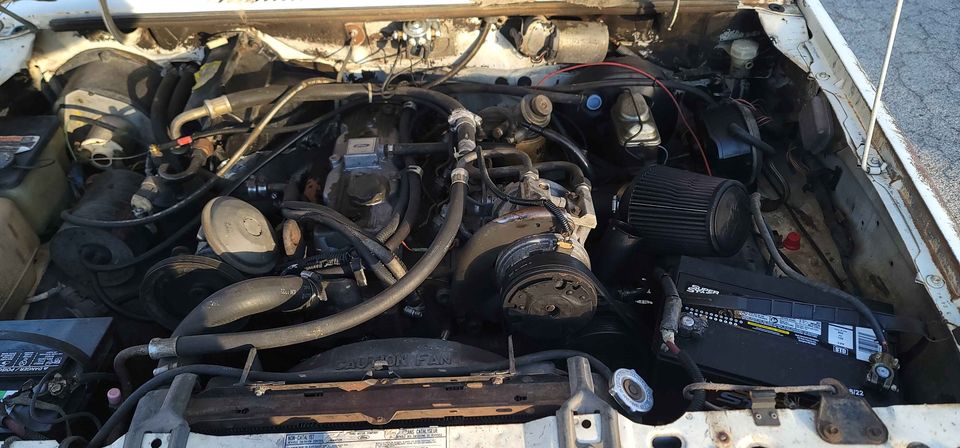Why the 2.2 Ford Ranger Engine Is a Popular Choice for Rugged and Reliable Performance
Why the 2.2 Ford Ranger Engine Is a Popular Choice for Rugged and Reliable Performance
Blog Article
Recognizing the Essentials of Vehicle Engines: Attributes, features, and types

Summary of Vehicle Engines
A car engine offers as the heart of a vehicle, transforming gas into power to drive it forward. This elaborate system consists of different components that function in unison to make certain ideal efficiency and efficiency. The fundamental procedure of an automobile engine includes the interior burning procedure, wherein gas and air are mixed, fired up, and expelled to develop power.
The engine's design can substantially affect its efficiency, fuel effectiveness, and emissions. Secret elements consist of the cylinder block, pistons, crankshaft, and camshaft, each playing an essential role in the engine's overall function.
Along with these components, engines commonly make use of different systems such as fuel shot, ignition, and cooling down systems to improve performance and long life. Understanding the basic technicians of car engines is essential for detecting concerns and executing upkeep, eventually adding to the automobile's reliability and effectiveness in time.

Kinds of Cars And Truck Engines
Vehicle engines can be classified into several kinds based on their design, gas kind, and functional principles. 2.2 ford ranger engine. The most typical groups include interior burning engines (ICE), electrical engines, and hybrid engines
Interior combustion engines, which can be additional separated into gasoline and diesel motor, operate by sparking a fuel-air combination to create power. Gasoline engines are normally lighter and smoother, while diesel motor are much more fuel-efficient and deal higher torque.
Electric engines use electrical power stored in batteries to power an electric motor, offering instantaneous torque and absolutely no discharges during operation. As modern technology developments, electrical lorries (EVs) are progressively ending up being popular for their environmental benefits and reduced running expenses.
Hybrid engines incorporate elements of both internal combustion and electrical engines, permitting versatile power resources and improved fuel performance. They can operate in different modes, making use of either the fuel engine, the electrical motor, or both at the same time.
Each kind of engine has distinctive advantages and negative aspects, influencing their application in different car types and market segments, from portable autos to heavy-duty trucks. Comprehending these types is essential for making educated choices regarding automobile choice and performance expectations.
Engine Features Discussed
Comprehending engine functions is vital for understanding how cars operate efficiently. At the core of any type of internal burning engine lies the fundamental process of transforming gas into mechanical power.
The ignition takes place next, igniting the blend and developing a quick growth of gases. This force drives the piston down during the power stroke, which inevitably equates into the rotational movement of the crankshaft. The exhaust stroke after that expels the spent gases from the chamber, giving way for a brand-new cycle to commence.
In addition to these key functions, engines likewise integrate systems that handle cooling and lubrication, guaranteeing optimal functional temperature levels and lowering friction between relocating components. This elaborate interplay of features allows the engine to produce the power necessary for lorry propulsion while keeping performance and dependability. Comprehending these functions gives important insight right into the intricacies of vehicle engineering and improves the ability to identify and attend to engine-related concerns effectively.
Key Engine Features
Engine design includes numerous crucial functions that dramatically influence effectiveness, efficiency, and longevity. One of the most essential elements is the engine configuration, that includes inline, V-type, and flat styles. Each configuration influences the engine's size, power, and equilibrium output, consequently impacting general lorry dynamics.
Another essential function is the engine variation, describing the total volume of all cyndrical tubes. Bigger variations usually produce more power however might compromise fuel effectiveness. Engine materials additionally play a pivotal duty; high-strength and light-weight products, such as aluminum and magnesium alloys, boost performance without adding excessive weight.
The sort of gas injection system used-- such as direct or multi-port shot-- affects combustion performance and exhausts. Turbo charging and turbocharging are attributes that enhance engine performance forcibly additional air into the burning Source chamber, increasing power outcome without dramatically raising engine dimension.
Lastly, the existence of innovative engine management systems enhances fuel-air mixture dig this and ignition timing, adding to smoother procedure and far better fuel economic situation. Collectively, these features define an engine's capabilities, establishing the structure for its performance and longevity in an affordable vehicle landscape.
Maintenance Tips for Engines
Proper engine maintenance is crucial for ensuring optimum efficiency and long life, as disregarding routine treatment can cause considerable issues down the line. To keep your engine properly, begin with routine oil modifications, normally every 3,000 to 7,500 miles, depending upon the sort of oil made use of. Fresh oil lubes engine parts, lowering friction and wear.
Additionally, keeping an eye on coolant degrees is essential to avoid overheating. Guarantee that the coolant is covered up and remains in great condition to keep effective temperature level guideline. Regularly replace and inspect air and fuel filters, as stopped up filters can impede airflow and fuel distribution, endangering engine effectiveness.
Additionally, focus on trigger plugs and ignition systems. Used or defective spark plugs can cause misfiring and lowered efficiency. Checking the battery terminals and connections for rust is also important, as a weak battery can influence engine starting.

Verdict
In summary, a comprehensive understanding of auto engines over here includes various types, features, and crucial features that dramatically affect automobile efficiency. Internal burning engines, in addition to hybrid and electrical options, demonstrate varied systems for power conversion. 2.2 ford ranger engine. Acknowledging the essential features, such as consumption and exhaust cycles, along with essential engine attributes like setup and gas injection systems, gears up car owners with the expertise essential for efficient maintenance and operation, ultimately enhancing lorry durability and effectiveness
An auto engine offers as the heart of a car, converting gas right into mechanical power to thrust it onward. The basic procedure of a cars and truck engine entails the inner burning procedure, where gas and air are blended, fired up, and removed to create power.
Frequently change and evaluate air and gas filters, as clogged up filters can prevent air movement and gas shipment, jeopardizing engine effectiveness. - 2.2 ford ranger engine
In summary, a comprehensive understanding of automobile engines includes different types, functions, and essential features that considerably affect vehicle performance. Recognizing the essential features, such as consumption and exhaust cycles, alongside essential engine features like setup and fuel injection systems, furnishes automobile proprietors with the knowledge needed for effective maintenance and procedure, ultimately boosting car long life and effectiveness.
Report this page